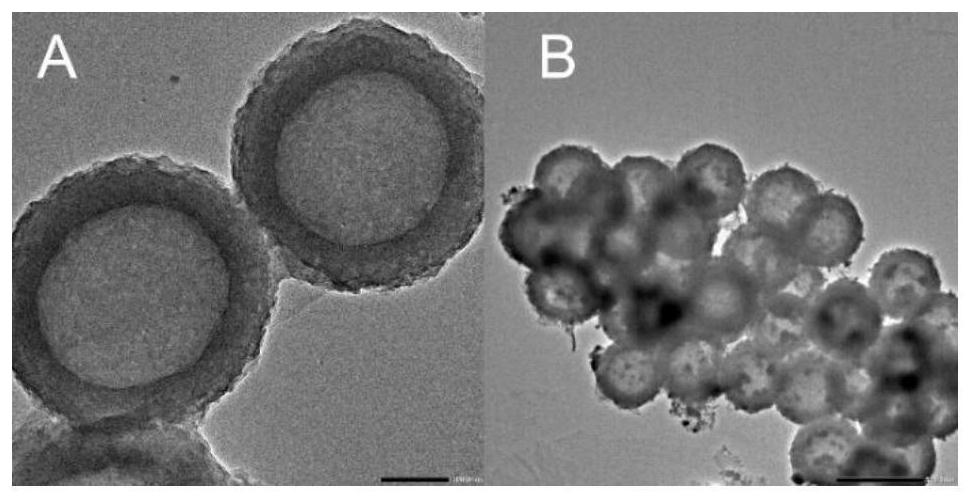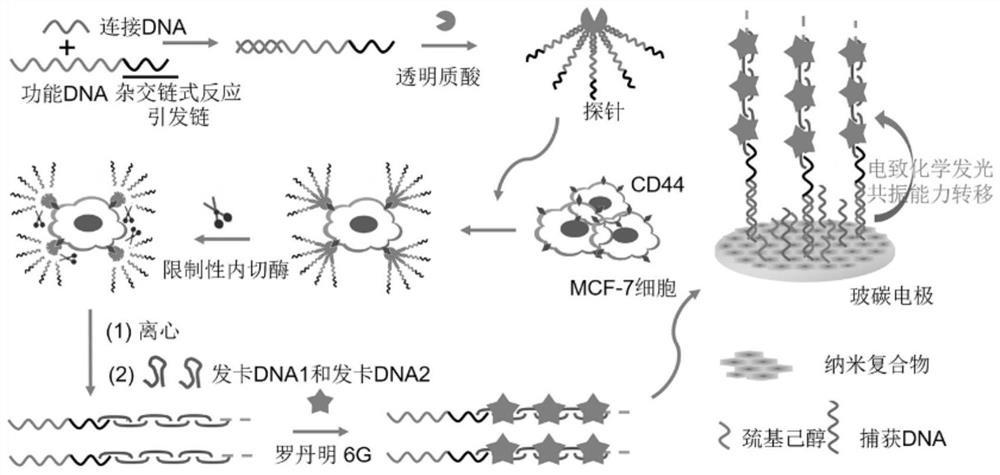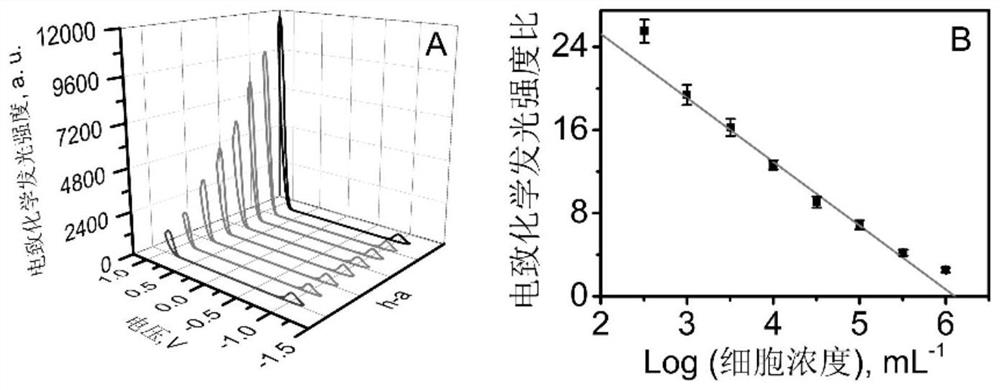c 3 no 4 Nanosphere-supported all-inorganic perovskite cspbbr 3 Preparation method and its electrochemiluminescent cell sensor
A C3N4, electrochemical technology, applied in the field of biological analysis, can solve the problems of the application of electrochemiluminescence of all-inorganic perovskite nanomaterials, poor electrochemiluminescence performance, hindering potential applications, etc. Chemiluminescent properties, increased sensitivity, improved instability
- Summary
- Abstract
- Description
- Claims
- Application Information
AI Technical Summary
Problems solved by technology
Method used
Image
Examples
Embodiment 1
[0036] The present invention provides a C-based 3 N 4 Nanosphere-supported all-inorganic perovskite CsPbBr 3 Bioanalytical method for detecting the concentration of CD44-overexpressing MCF-7 cells of the composite.
[0037] C 3 N 4 Nanosphere-supported all-inorganic perovskite CsPbBr 3 The synthetic method of the composite material comprises the following steps: take 0.2035 g Cs 2 CO 3 , 10mL of octadecene, and 0.625mL of oleic acid were added to a three-necked flask, and placed in a vacuum oven at 100°C for 1h; 2 Heat to 150°C in the atmosphere until the solid is completely dissolved to form a precursor solution. Take 0.138gPbBr 2 , 1 mg hollow mesoporous C 3 N 4 Nanospheres ( figure 1 A), 10mL of octadecene was added to a three-necked flask respectively, and placed in a vacuum oven at 100°C for 1 hour; then 1.0mL of oleylamine and 1.0mL of oleic acid, which were previously dried in vacuum at 100°C, were added, and in N 2 Heat to 120°C in the atmosphere for 40 mi...
Embodiment 2
[0042] The invention provides a biological detection method for detecting the concentration of HeLa cells overexpressing the carcinoembryonic antigen.
[0043] C 3 N 4 Nanosphere-supported all-inorganic perovskite CsPbBr 3 The synthetic method of the composite material comprises the following steps: take 0.2035 g Cs 2 CO 3 , 5mL of octadecene, and 0.5mL of oleic acid were added to a three-necked flask, and placed in a vacuum oven at 100°C for 1h; then in N 2 Heat to 150°C in the atmosphere until the solid is completely dissolved to form a precursor solution. Take 0.138gPbBr 2 , 5 mg hollow mesoporous C 3 N 4 Nanospheres ( figure 1 A), 5 mL of octadecene were added to a three-necked flask, and placed in a vacuum oven at 100 °C for 1 h; then 1.0 mL of oleylamine and 1.0 mL of oleic acid that had been dried in vacuum at 100 °C were added, and in N 2 Heat to 120°C in the atmosphere for 40 minutes, and then continue to heat to 150°C to form a high-temperature reaction sol...
PUM
 Login to View More
Login to View More Abstract
Description
Claims
Application Information
 Login to View More
Login to View More - R&D
- Intellectual Property
- Life Sciences
- Materials
- Tech Scout
- Unparalleled Data Quality
- Higher Quality Content
- 60% Fewer Hallucinations
Browse by: Latest US Patents, China's latest patents, Technical Efficacy Thesaurus, Application Domain, Technology Topic, Popular Technical Reports.
© 2025 PatSnap. All rights reserved.Legal|Privacy policy|Modern Slavery Act Transparency Statement|Sitemap|About US| Contact US: help@patsnap.com



